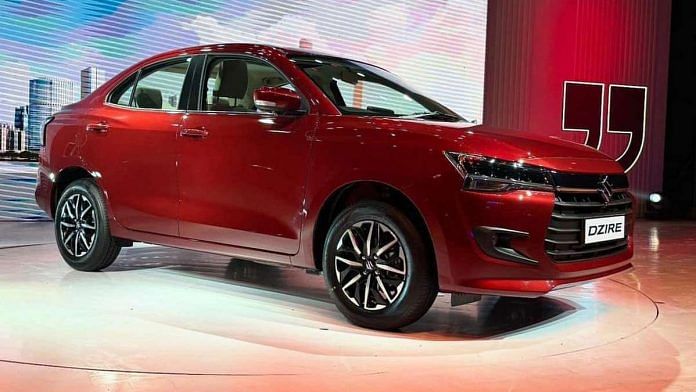Earlier this week, Maruti Suzuki took the wraps off the fourth generation of their best-selling Dzire compact sedan. The new iteration features all the bells and whistles one might expect on any modern car, including a sunroof. But most importantly, this new Dzire comes with a five-star adult occupant safety rating—and four stars for children—from the Global New Car Assessment Program, or GNCAP.
This made everyone associated with the Indian automotive industry raise their eyebrows a bit. Almost as much as The Rock does inside the wrestling ring. After all, this is the same company whose chairman RC Bhargava has, in the past, railed against strict safety norms in multiple interviews. He has argued that these safety standards are too expensive—not just in terms of production costs, such as the addition of multiple airbags (the new Dzire has six, as do most new cars launched in India today), but also in the engineering and development fronts.
The new GNCAP and Bharat-NCAP (BNCAP) tests include both side-impact and side-pole impact evaluations, which means additional strengthening of the doors and the B-pillar between them. Yet, the new Dzire isn’t all that much more expensive than the outgoing generation—at least not at the starting price of Rs 6.79 lakh ex-showroom. The top-end automatic transmission model with a sunroof is significantly pricier at Rs 10.14 lakh ex-showroom, though.
When I asked Maruti-Suzuki executives at the launch why they decided to go for a GNCAP test—particularly since they have been known in the past to have not said very nice words about it—one thing became clear. Safety sells in India.
As Partho Banerjee, executive officer of Sales and Marketing at Maruti-Suzuki, told me: “Safety is becoming very important in the mind of the Indian consumer.”
Unsaid, though evident, was the fact that Maruti-Suzuki had little choice but to keep up with the Joneses.
Also Read: BMW i5 M60 proves EVs can be fun too. Cars haven’t lost their soul
Safety as strategy
The selling power of safety is something that domestic car makers like Tata Motors and Mahindra discovered a long time ago. Just a couple of days ago, Mahindra announced that their Thar ROXX was the first body-on-frame vehicle to get a five-star BNCAP rating. The XUV 3X0 and XUV 400 also got five-star ratings for adult and child occupancy. In fact, when the Citroen Basalt recently got a four-star adult occupancy rating by BNCAP, it was a bit surprising.
All said and done, Maruti’s progress on safety has been well known for a while. Several of their models now feature six airbags as standard, and they have built an advanced crash-test centre at their research and development facility in Haryana’s Rohtak. I was lucky enough to visit this centre a couple of years ago and even witnessed a crash-test conducted on a Brezza. The test was loud and over in the blink of an eye. I also learned that from the start of development to the final production model, passenger vehicles undergo almost 50 crash tests. And these do not include the tests conducted by testing bodies like BNCAP and GNCAP.
As an aside, if you’re wondering why Maruti-Suzuki sent the Dzire to GNCAP for a ‘voluntary test’ rather than waiting for BNCAP scores, two reasons emerged. First, the company wanted the test results before the car launch—BNCAP is currently swamped with testing existing models, and results might have taken months. Second, a BNCAP test will also be conducted on the Dzire in due course.
Also Read: Tata Motors’ new Nexon shows CNG story is the one to watch, not just electric
Beyond the ratings
As I have written in the past, Child Occupant Protection (COP) scores in BNCAP and GNCAP are only for children who are secured in infant carriers or child seats. It irritates me no end when I see a car or SUV with a ‘Baby On Board’ sticker on the rear windshield and no child seat in sight. And it downright angers me to see children sitting in the front seat of modern cars equipped with airbags. Airbags aren’t soft, fluffy pillows—they deploy with explosive force and even adults can suffer burns and other injuries. A child sitting low down on the front seat could beak their neck. If you are buying a vehicle with safety in mind, and clearly many of you are, please take your children’s safety into consideration as well.
And safety scores from BNCAP and GNCAP are all well and good, but as the recent horrific accident in Dehradun, where six young people lost their lives, shows, no five-star scores can save your life if you drive like a maniac.
Yes, modern vehicles with all their safety features —both passive, like structural engineering, and active, such as airbags and Advanced Driver Assistance Systems (ADAS)—will help keep you safe. But drive within your limits and abilities, and definitely don’t drive when intoxicated.
@kushanmitra is an automotive journalist based in New Delhi. Views are personal.
(Edited by Asavari Singh)






